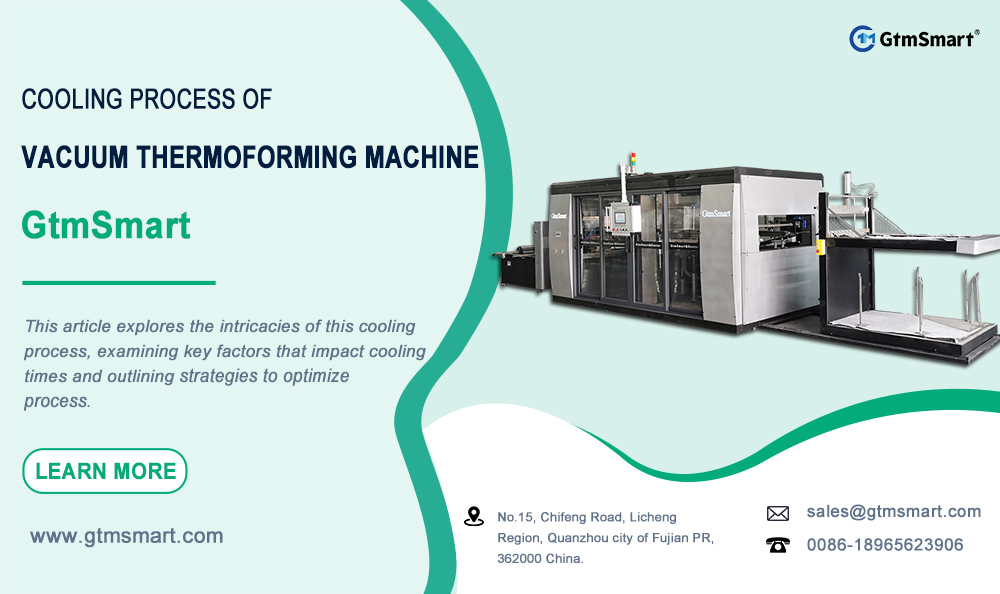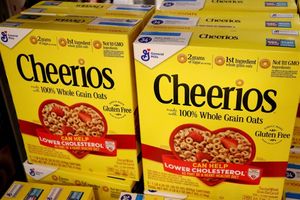
Cooling Process of Vacuum Thermoforming Machine
The cooling process in automatic plastic vacuum forming machine is an essential stage that directly influences the quality, efficiency, and functionality of the final product. It requires a balanced approach to ensure that the heated material transforms into its final form while maintaining structural integrity and desired properties. This article explores the intricacies of this cooling process, examining key factors that impact cooling times and outlining strategies to optimize the process.
The Critical Nature of Rapid Cooling
In automatic vacuum thermoforming machine, materials must be cooled swiftly after the heating phase. This is crucial because materials left at high temperatures for extended periods can degrade, affecting the final product’s quality. The primary challenge is to initiate cooling immediately after forming while maintaining the material at a temperature conducive to effective molding. Rapid cooling not only preserves the material’s properties but also increases throughput by reducing cycle times.
Influential Factors in Cooling Times
Cooling times can vary significantly depending on several factors:
1. Material Type: Different materials have unique thermal properties. For instance, Polypropylene (PP) and High Impact Polystyrene (HIPS) are commonly used in vacuum forming, with PP generally requiring more cooling due to its higher heat capacity. Understanding these properties is crucial for determining the appropriate cooling strategies.
2. Material Thickness: The thickness of the material after stretching plays a vital role in cooling. Thinner materials cool faster than thicker ones because of the reduced volume of material retaining heat.Forming Temperature: Materials heated to higher temperatures will inevitably take longer to cool. The temperature must be high enough to make the material malleable but not so high as to cause degradation or excessive cooling times.
3. Mold Material and Contact Area: The material and design of the mold significantly affect cooling efficiency. Metals like aluminum and beryllium-copper alloy, known for their excellent thermal conductivity, are ideal for reducing cooling times.
4. Cooling Method: The method used for cooling—whether it involves air cooling or contact cooling—can drastically change the efficiency of the process. Direct air cooling, especially targeted at thicker sections of the material, can enhance cooling effectiveness.
Calculating Cooling Time
Calculating the exact cooling time for a specific material and thickness involves understanding its thermal properties and the dynamics of heat transfer during the process. For example, if the standard cooling time for HIPS is known, adjusting for the thermal characteristics of PP would involve using a ratio of their specific heat capacities to estimate PP’s cooling time accurately.
Strategies for Optimizing Cooling
Optimizing the cooling process involves several strategies that can lead to significant improvements in cycle time and product quality:
1. Enhanced Mold Design: Using molds made from materials with high thermal conductivity can decrease cooling times. The design should also promote uniform contact with the material to facilitate even cooling.
2. Air Cooling Improvements: Enhancing the airflow within the forming area, particularly by directing air to thicker material sections, can improve cooling rates. Using chilled air or incorporating water mist can further enhance this effect.
3. Minimizing Air Entrapment: Ensuring that the mold and material interface is free from trapped air reduces insulation and improves cooling efficiency. Proper venting and mold design are critical in achieving this.
4. Continuous Monitoring and Adjustment: Implementing sensors and feedback systems to monitor the cooling process allows for real-time adjustments, optimizing the cooling phase dynamically based on actual conditions.
Conclusion
The cooling process in vacuum thermoforming machine is not merely a necessary step but a pivotal phase that determines the throughput, quality, and functional attributes of the final product. By understanding the variables affecting cooling and employing effective optimization strategies, manufacturers can significantly enhance their production capabilities, resulting in higher quality products.
Media Contact
Company Name: GTMSMART Machinery Co., Ltd.
Email: Send Email
Country: China
Website: https://www.gtmsmart.com/






